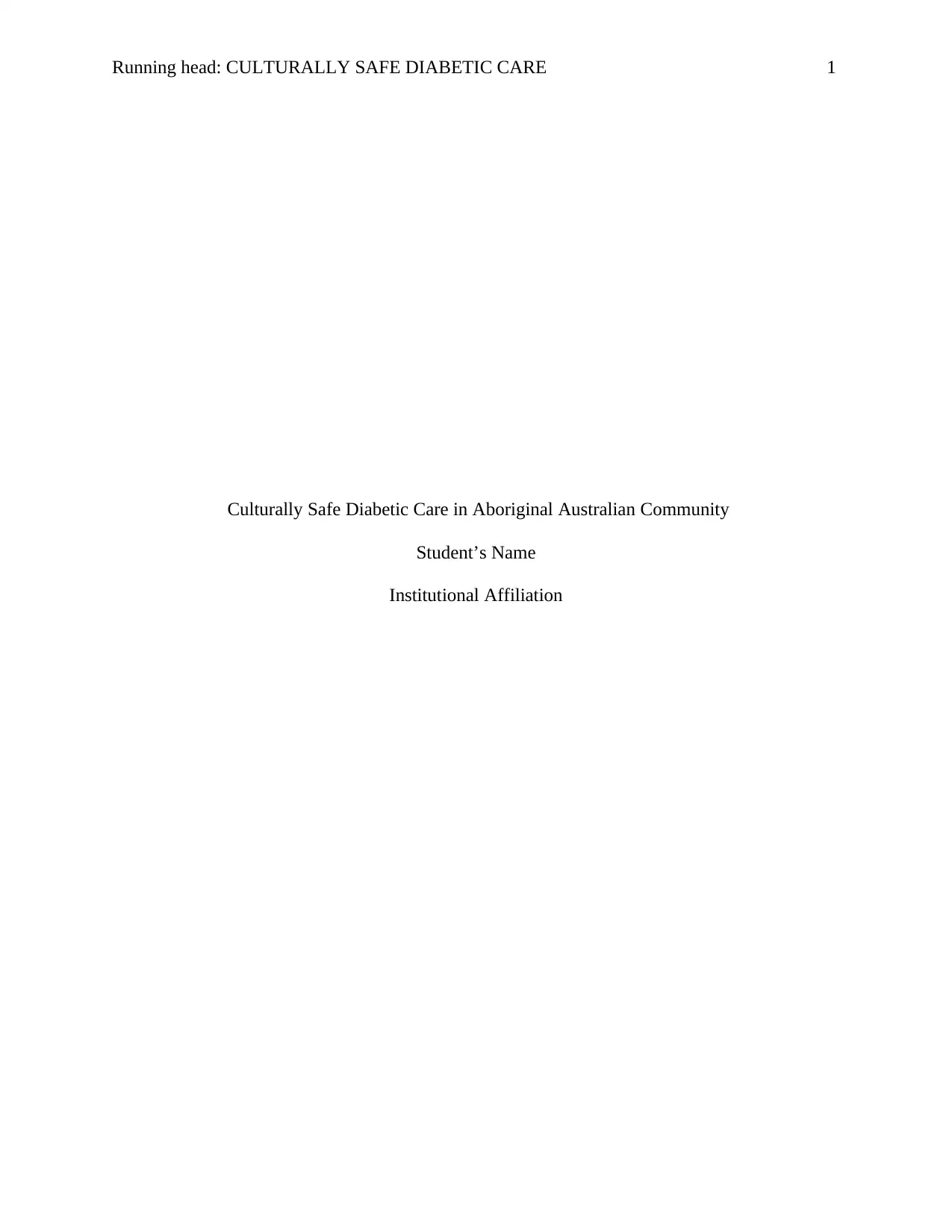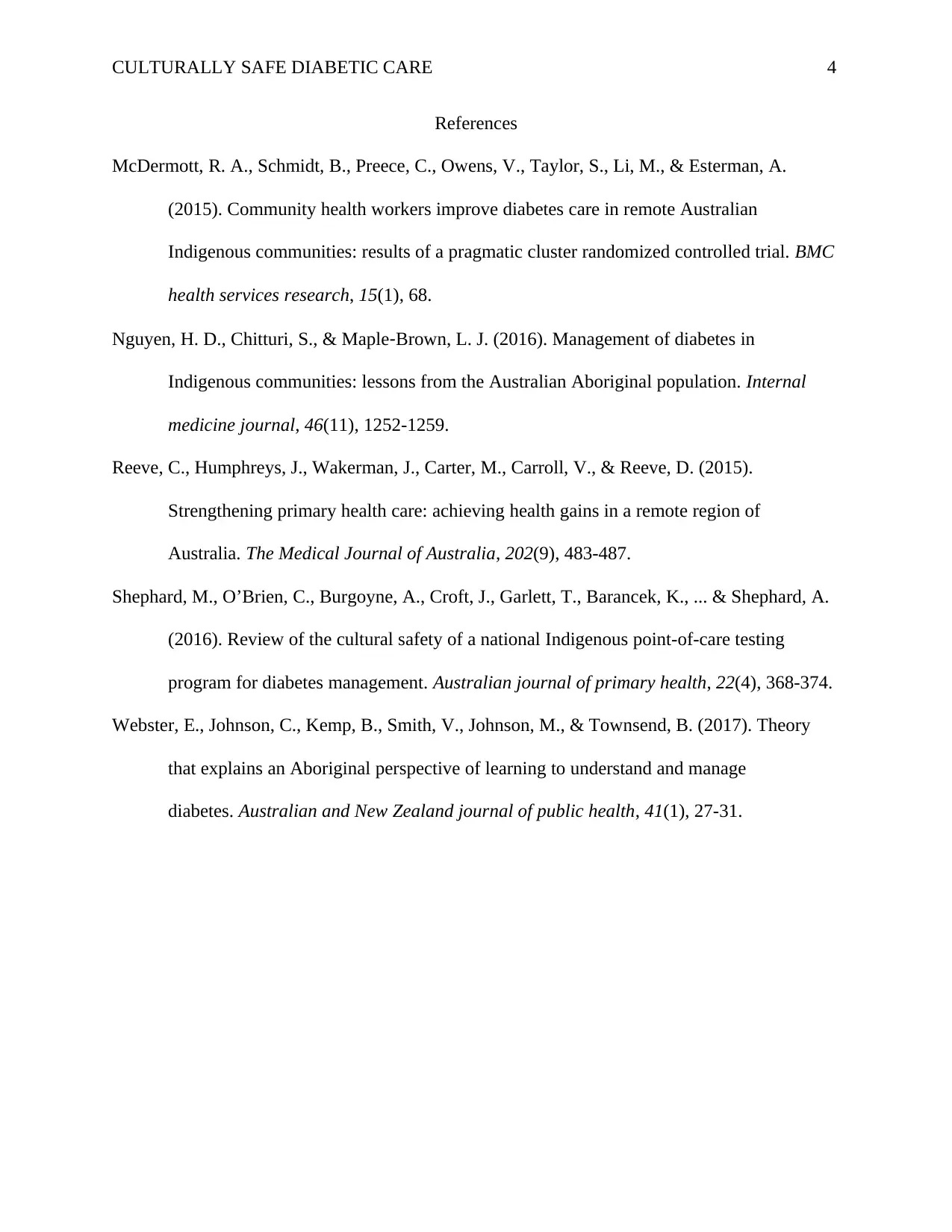Culturally Safe Diabetic Care: Improving Health Outcomes in Australia
VerifiedAdded on 2023/06/10
|4
|755
|195
Essay
AI Summary
This essay discusses the importance of culturally safe diabetic care within Aboriginal Australian communities, where diabetes prevalence is notably high. It emphasizes the need for culturally appropriate, high-quality care delivered through a community-based, health worker-led approach. This model leverages community health workers' understanding of local culture to improve diabetes prevention and management, advocating for culturally relevant self-management support, effective communication, and education on lifestyle changes. The essay also highlights the benefits of point-of-care testing and the integration of traditional healers to complement modern healthcare services, ensuring accessible and convenient pathology services for the Indigenous population while promoting a holistic approach to health and well-being.
1 out of 4











![[object Object]](/_next/static/media/star-bottom.7253800d.svg)